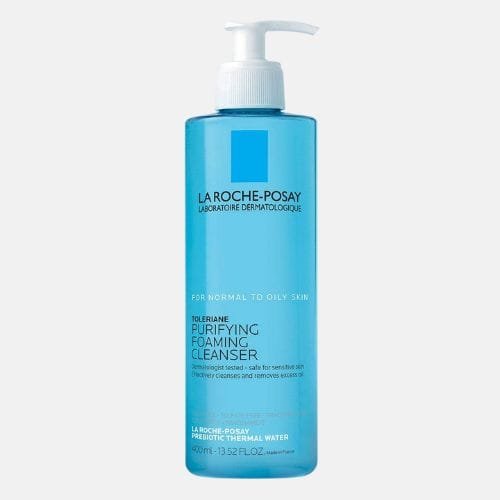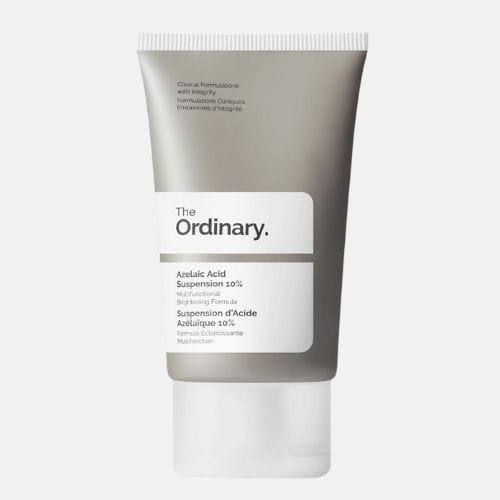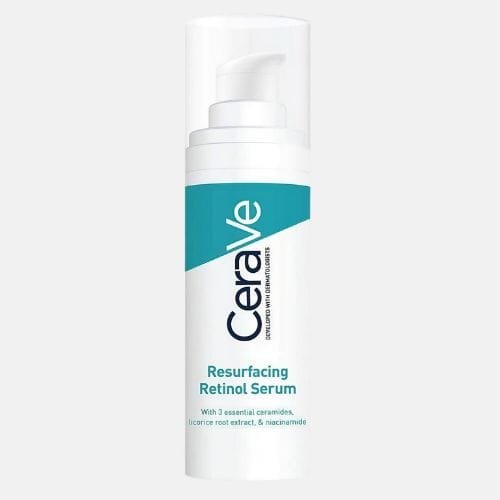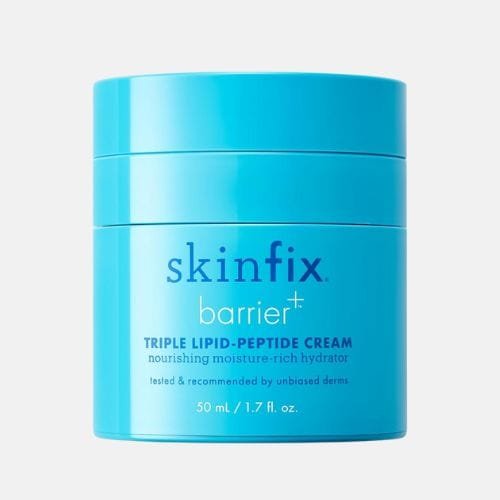The 8 Best Skincare Products for Hormonal Acne in 2025
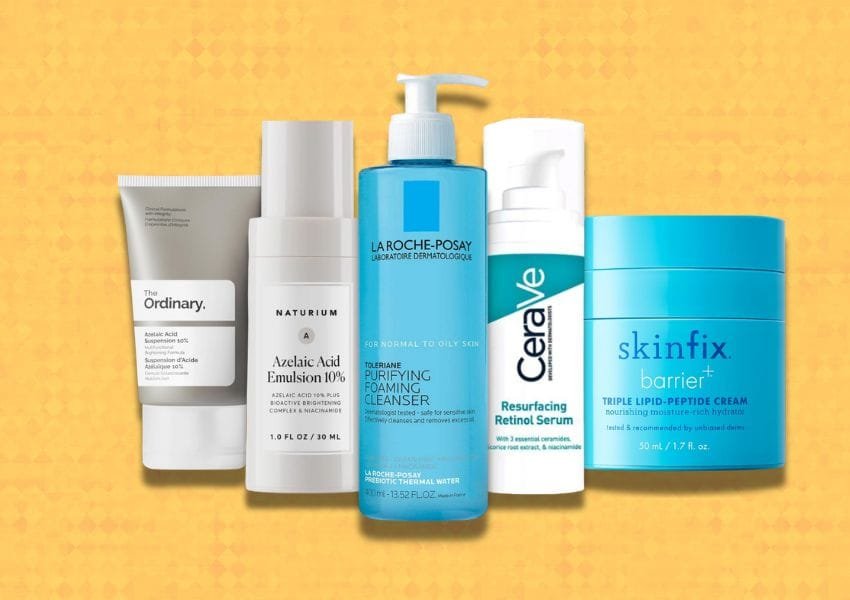
In my decade-plus of fighting hormonal acne (yes, we’re on a first-name basis now), I’ve learned that no breakout is as persistent, as painful, or as rude as the ones that show up around my chin and jawline like clockwork every month. You know the type: deep, under-the-skin bumps that hurt to touch and linger like an unwanted guest. They don’t respond to your go-to spot treatments, and they certainly don’t care that you’ve washed your pillowcases and given up dairy.
Hormonal acne isn’t like your average breakout. It doesn’t play by the same rules — and unfortunately, it doesn’t care how many 10-step skincare routines you’ve committed to. Whether you’re dealing with cystic flare-ups before your period or battling breakouts from stress, the products that actually work are few and far between.
Over the years, I’ve tried everything from harsh drying lotions to the “gentle” things that broke me out more. I’ve spent hours in Reddit threads, asked dermatologists what actually works, and even listened to TikTok estheticians (the trustworthy kind). Through all this trial and error, I’ve landed on a handful of products that consistently show up for me — and for my skin — when hormonal acne hits.
Below, the best skincare products for hormonal acne that are worth the hype (and your money). These are derm-approved, widely loved, and most importantly — they’ve actually worked for my hormonal breakouts.
Best Picks
1. La Roche-Posay Toleriane Purifying Foaming Cleanser
If you’re dealing with hormonal acne, step one is a cleanser that won’t mess with your already sensitive skin — and La Roche-Posay’s Toleriane Purifying Foaming Cleanser does exactly that. It’s gentle, fragrance-free, non-comedogenic, and removes excess oil and impurities without drying you out.
What I love about it is that it walks the line between effective and nurturing. It contains niacinamide to calm inflammation (a huge plus if your breakouts are red and angry) and ceramides to support your skin barrier — which is often compromised by acne treatments. Bonus points for the creamy lather that rinses clean, no film or tight feeling afterward.
It’s affordable, accessible, and backed by dermatologists — making it an excellent first step in any hormonal acne routine.
Key Ingredients: Niacinamide, ceramides, prebiotic thermal water
2. Paula’s Choice 2% BHA Liquid Exfoliant
If there’s a skincare product with more cult status than this one, I haven’t met it. The Paula’s Choice 2% BHA Liquid is iconic for a reason. It’s a chemical exfoliant that works by diving deep into your pores to unclog them and dissolve oil buildup — which is exactly what hormonal acne loves to feed on.
I use this about three times a week in the evening, after cleansing and before moisturizer. It’s surprisingly gentle for a chemical exfoliant, and it doesn’t have the sting that some similar products do. Over time, it’s helped reduce the frequency of my hormonal breakouts and even fade post-acne marks (which, let’s be honest, can be just as annoying as the acne itself).
And if you’re wondering whether BHA works for deeper, cystic acne — it does. It won’t stop your hormones from wreaking havoc, but it will make sure your skin is in the best possible place to deal with it. Plus, it plays well with other actives (like niacinamide or azelaic acid), so you can build a routine around it without risking irritation.
Key Ingredients: Salicylic acid (2%)
3. The Ordinary Azelaic Acid Suspension 10%
Azelaic acid is the underrated queen of acne-fighting ingredients. It doesn’t get the same fanfare as retinoids or BHAs, but it should. Why? Because it’s one of the few ingredients that tackles acne, inflammation, and discoloration — all at once — without being too harsh.
This version from The Ordinary is affordable, fragrance-free, and effective. I reach for it when my skin’s feeling sensitive but I still want to fight breakouts. It’s also great if you have hormonal acne paired with rosacea, redness, or stubborn dark spots. Think of it as a gentle multitasker that quietly does the work while other products steal the spotlight.
I apply a small amount at night, post-cleansing and before moisturizer. The texture is a bit creamy and might feel slightly grainy at first, but it sinks in quickly. And the best part? It helps reduce that angry look cystic acne can have — which makes it feel less urgent and more manageable.
Key Ingredients: Azelaic acid (10%)
4. CeraVe Resurfacing Retinol Serum
Hormonal acne requires a long game. And for that, retinol is your best friend. It speeds up cell turnover, helps prevent clogged pores, and supports collagen production — which is helpful for both active acne and the marks it leaves behind.
CeraVe’s version is beginner-friendly, affordable, and non-irritating. It contains encapsulated retinol, meaning it releases slowly over time (translation: less irritation). Plus, the added ceramides help repair your skin barrier, which is often compromised when you’re dealing with breakouts. If you’ve been nervous to try retinol because your skin is sensitive or reactive, this is a great place to start.
I use this 2–3 times a week at night and always follow with a good moisturizer. Consistency is key here — it won’t give you overnight results, but give it a few weeks and you’ll start to see smoother skin, fewer breakouts, and a noticeable difference in tone and texture.
Key Ingredients: Encapsulated retinol, licorice root extract, ceramides
5. iS Clinical Cleansing Complex
Finding the right cleanser for hormonal acne is tricky. Some strip your skin barrier so badly they make things worse; others are so gentle they barely do anything. iS Clinical’s Cleansing Complex is the rare in-between that cleans deeply without disrupting your skin.
It’s gel-based, slightly foaming, and loaded with exfoliating acids (like salicylic and glycolic), yet still manages to feel calming thanks to soothing ingredients like chamomile and Centella. I’ve used this as my AM and PM cleanser and found that it really helps reduce congestion around my chin and jaw without leaving my skin dry or tight.
Derms love this one because it’s non-comedogenic and suitable for all skin types — even sensitive, acne-prone skin. Yes, it’s on the pricier side for a cleanser, but a little goes a long way, and the bottle lasts forever.
Key Ingredients: Salicylic acid, glycolic acid, chamomile extract
6. Skinfix Barrier+ Triple Lipid-Peptide Cream
Yes, you still need a good moisturizer when you have hormonal acne. No, it won’t make you break out more (if you choose the right one). Skinfix’s Barrier+ Cream is like a big glass of water for your skin barrier — and your barrier needs to be strong to handle all the active ingredients you’re using to treat acne.
This cream is thick enough to feel nourishing but sinks in quickly with no greasy residue. It contains lipids and peptides that mimic what your skin naturally produces, helping to restore moisture and resilience — especially if you’re using exfoliants or retinol.
I recommend this especially to anyone with combo or dry-acne-prone skin who’s scared of rich moisturizers. It gives you that plush, protected feeling without triggering new breakouts. A true skin barrier MVP.
Key Ingredients: Peptides, ceramides, hyaluronic acid
7. Naturium Azelaic Acid Emulsion 10%
I already talked about how much I love azelaic acid — but Naturium’s version deserves its own spotlight. It’s formulated as an emulsion (meaning lightweight and easily absorbed), and combines azelaic acid with calming niacinamide and brightening vitamin C. Basically: it tackles redness, uneven tone, and active breakouts all at once.
I use this in the mornings under SPF when I want something gentle but effective to keep hormonal acne at bay. It’s especially great for people dealing with skin tone issues like post-inflammatory hyperpigmentation — those lingering dark marks after a cyst finally fades.
Key Ingredients: Azelaic acid, niacinamide, vitamin C
8. EltaMD UV Clear Broad-Spectrum SPF 46
Listen, I don’t care how solid your hormonal acne routine is — if you’re not wearing sunscreen, you’re sabotaging your results. Acne treatments make your skin more sun-sensitive, and UV exposure can worsen inflammation and hyperpigmentation. That’s where EltaMD UV Clear comes in.
This cult-favorite SPF checks all the boxes: lightweight, oil-free, non-comedogenic, and packed with ingredients that actually help acne (like niacinamide and lactic acid). It’s especially great for sensitive or redness-prone skin and doesn’t leave a white cast, which makes it one of the most inclusive mineral sunscreens out there.
Even better? It layers beautifully under makeup and doesn’t pill with other skincare. I use it every single day — even when I’m indoors — and I’ve seen a noticeable difference in how quickly my post-acne marks fade when I’m diligent about it.
Key Ingredients: Zinc oxide, niacinamide, lactic acid
How to Treat Hormonal Acne (Beyond Just Products)
Even the best skincare products for hormonal acne won’t work in isolation. Trust me, I’ve tried. What has helped the most is understanding that hormonal acne often needs an inside-out approach.
Here are a few things to consider if you’re still struggling:
Diet & Stress: For some people (myself included), high sugar, dairy, or stress can be acne triggers. A food journal or working with a nutritionist may help connect the dots.
Supplements: Zinc, DIM, and omega-3s are often recommended, but always check with a professional before adding anything new.
Birth Control or Spironolactone: If your acne is severely hormonal, a dermatologist or OB-GYN might suggest hormone-regulating options.
Be Consistent: I can’t stress this enough. These products work best when you use them regularly — not just when your skin starts acting up.
What exactly is hormonal acne, and how is it different from regular acne?
Hormonal acne is triggered by fluctuations in hormones — often related to menstrual cycles, stress, puberty, or conditions like PCOS (Polycystic Ovary Syndrome). It tends to show up around the lower face (think chin, jawline, and sometimes neck), and it’s often deeper, more cystic, and more painful than surface-level whiteheads or blackheads.
Unlike “regular” acne, which can be caused by bacteria, oil, or clogged pores, hormonal acne is usually internal. That’s why it doesn’t always respond to traditional spot treatments — because it’s not just about what’s happening on your skin, but what’s happening inside your body.
How can I tell if my acne is hormonal?
A few signs point to hormonal acne:
It flares up around your period or when you’re stressed.
The breakouts tend to be deep, red, and painful (cystic).
It mostly appears on your chin, jawline, or neck.
Over-the-counter treatments don’t seem to help much.
If this sounds like your skin, there’s a good chance your acne has a hormonal component. Of course, it’s always a good idea to confirm with a dermatologist, especially if your breakouts are chronic or severe.
Can skincare alone get rid of hormonal acne?
Skincare can definitely help manage and reduce hormonal acne — but it often needs to be part of a bigger picture. Topicals like benzoyl peroxide, salicylic acid, azelaic acid, and retinoids can improve skin texture, reduce inflammation, and keep pores clear.
But because hormonal acne is rooted in internal shifts, sometimes other interventions (like lifestyle changes, supplements, or prescriptions like spironolactone or birth control) might be needed for long-term control. Think of skincare as your first line of defense — it sets the stage for clear, calm skin and can dramatically reduce how intense your breakouts get.
Will moisturizing make my acne worse?
Nope — in fact, not moisturizing can make things worse. When your skin is dry or stripped from acne treatments, it can produce more oil to compensate, which can lead to further breakouts. The key is choosing the right kind of moisturizer: one that’s non-comedogenic, oil-free (or oil-balanced), and contains barrier-repairing ingredients like ceramides or peptides.
Lightweight gels or emulsions work well for oily-prone skin, while thicker creams (like Skinfix Barrier+ or Avène Cicalfate) are great if your skin feels dry, tight, or over-exfoliated.
How long does it take to see results from a new acne product?
Most acne treatments take at least 4 to 6 weeks to show results — and sometimes your skin might even look a little worse before it gets better (a process called “purging”). That’s totally normal and happens when ingredients like retinol or acids speed up your skin’s turnover rate.
The key is consistency. Stick with a product unless you’re having a bad reaction (burning, itching, flaking that doesn’t improve). Give your skin time to adjust before deciding whether something works or not.
